On the morning of June 3, in Ben Tre province, General Secretary To Lam and the Central Working Delegation worked with the Standing Committee of Ben Tre Provincial Party Committee, the Standing Committee of Tra Vinh Provincial Party Committee and the Standing Committee of Vinh Long Provincial Party Committee on the implementation of recent resolutions, conclusions and directives of the Central Committee; the implementation of Resolution No. 60-NQ/TW dated April 12, 2025 of the Party Central Committee on the 11th Conference of the 13th Party Central Committee.
Attending the meeting were comrades: Politburo member, Secretary of the Party Central Committee, Head of the Central Organization Commission Le Minh Hung; Politburo member, Secretary of the Party Central Committee, Chairman of the Central Inspection Commission Nguyen Duy Ngoc; Politburo member, Secretary of the Party Central Committee, Chairman of the Central Committee of the Vietnam Fatherland Front Do Van Chien; Politburo member, Director of the Ho Chi Minh National Academy of Politics, Chairman of the Central Theoretical Council Nguyen Xuan Thang; Party Central Committee Secretary, Head of the Party Central Committee Office Le Hoai Trung; Party Central Committee member, Deputy Prime Minister Le Thanh Long; Party Central Committee members, leaders of central departments, ministries, branches, leaders of Ben Tre, Tra Vinh, Vinh Long provinces...
Agree on major policies of the Party
The three provinces of Vinh Long, Ben Tre and Tra Vinh are all localities with special geographical locations in the Mekong Delta. These provinces are all strategically located at the gateway to the lower Mekong River basin, playing an important role in marine economy , high-tech agriculture, renewable energy industry, culture and society, diverse tourism potential, and are also the regions with the largest Khmer ethnic population in the country.
Following the direction of the Central and Provincial Party Committees, the Standing Committees of the Provincial Party Committees of the three provinces promptly directed all levels and sectors to issue documents for implementation. The Provincial Party Committees of the three provinces led and directed seriously, closely, with many innovations, contributing to improving the leadership capacity and fighting strength of the Party organization; promoting democracy, consolidating people's trust; promoting socio-economic development, ensuring national defense and security and building an increasingly clean and strong political system.
Through implementation, the majority of cadres, party members and people agreed with the Party's major policies, contributing to the overall development of the Mekong Delta region and the whole country.
The Standing Committees of the Provincial Party Committees of the three provinces have concretized and issued over 30 documents, implementing them closely, consistently, and synchronously, ensuring the content, viewpoints, principles, goals, and tasks in accordance with the Central Government's orientation. The localities have set out 14-20 specific tasks and they have been implemented according to a roadmap, with products and quality.
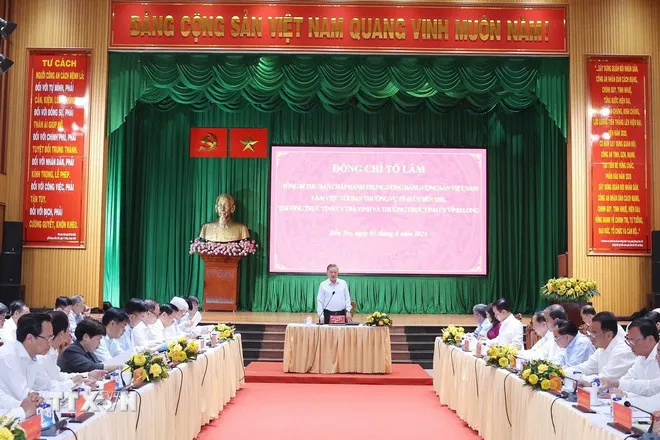
The preparations for the commune-level arrangement, the end of district-level activities, and the consolidation of provincial levels were directed by the Standing Committees of the 3 provincial Party Committees to be completed and submitted to the Government the Project to merge the provinces of Ben Tre, Vinh Long, and Tra Vinh. All 3 provinces have completed and reported to the Central Government the Project to arrange commune-level administrative units (Ben Tre has 48 communes and wards; Vinh Long has 35 communes and wards; Tra Vinh has 41 communes and wards). The provinces have defined the framework of leadership staff for communes and wards (after the merger), and have basically completed the planned assignment of cadres to hold the positions of secretary, deputy secretary, chairman, and vice chairman of the People's Council and People's Committee of communes and wards after the merger.
Regarding the settlement of regimes and policies when implementing the arrangement, up to now, the 3 provinces have resolved 345 subjects, continuing to review and synthesize fully to promptly resolve policies for subjects who have retired due to the arrangement at the commune level, the end of district-level activities, the consolidation at the provincial level and subjects of non-professional cadres at communes, wards and towns.
The provinces have plans for using surplus headquarters, avoiding loss and waste. At the same time, there are plans to transfer public assets to commune-level administrative units after arrangement, continue to use or liquidate all surplus assets in accordance with regulations on management and use of public assets. The provinces have also proactively planned to transfer public investment capital sources assigned to the district level to the provincial management boards to continue implementing works and projects, avoiding congestion after the end of district-level activities.
In recent years, the three provinces of Vinh Long, Ben Tre and Tra Vinh have achieved many important results in socio-economic fields. In 2024 and especially in the first months of 2025, the economic growth rate of the three provinces continues to be maintained at a fairly good level, demonstrating a stable recovery momentum and positive changes in the internal structure. The economic structure has clearly shifted towards gradually increasing the proportion of industry and services, gradually reducing dependence on pure agriculture. Social security is guaranteed, people's lives are increasingly improved.
Eco-economic zone, unique and modern riverside - coastal urban area
In his concluding remarks at the meeting, General Secretary To Lam highly appreciated and commended the efforts and positive results that the localities have achieved in recent times; affirming that these achievements not only create a foundation for future development but also are an important premise for the three provinces to merge and form a new administrative-economic unit with high competitiveness, truly one of the fast-growing poles of the Mekong Delta region.
In addition to the positive results, the General Secretary pointed out that economic linkages between the three localities and with the Mekong Delta region are generally fragmented. Economic sectors with complementary advantages such as coconut, aquaculture, organic agriculture, clean energy, etc. are still developing horizontally, lacking an integrated value chain model and inter-regional coordination. The socio-economic infrastructure system of all three provinces lacks synchronization, especially the connecting routes to the sea, dry ports, coastal roads and waterway economic corridors, etc.
The General Secretary emphasized that the merger of Vinh Long, Ben Tre and Tra Vinh into a new administrative-economic unit is not simply a solution to reorganize administrative boundaries but, more importantly, a breakthrough choice to rebuild the development structure in an integrated, synchronous and effective direction. This merger will open up new space to maximize comparative advantages and complementarities between localities, promoting substantive economic linkages.
The three provinces of Vinh Long, Ben Tre and Tra Vinh have complementary economic structures, industrial strengths and geographical locations, creating a favorable foundation for merging into a harmonious and comprehensive development entity. At the same time, in terms of culture and society, the three localities have a stable population base, similar regional identities, favorable for institutional integration, synchronization of governance, human resource development and preservation of national cultural harmony. These are necessary and sufficient conditions for forming an administrative-economic unit with strong internal strength, effective organization and operation and outstanding competitiveness in the region and the country.
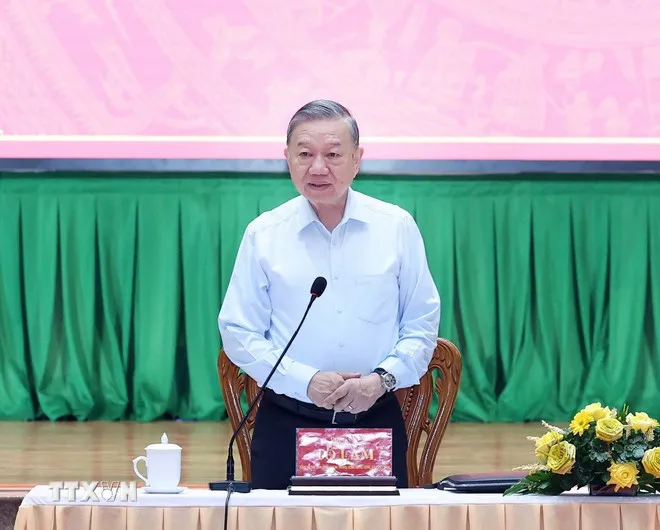
The General Secretary affirmed that this is an opportunity to shift from a provincial development model to a regional development coordination model, with a scale large enough to attract strategic investment, implement linked infrastructure projects, digitize public administration, develop a green economy and effectively respond to climate change. Importantly, this merger must go hand in hand with a new governance mindset, streamlined apparatus, transparent operations, modern technology and flexible coordination, in order to form one of the growth centers with high spreading power, high adaptability and capable of leading the Mekong Delta region into a new development stage with the country.
With its location between the lower reaches of the Tien River and the Hau River and bordering the East Sea, the new Vinh Long after the merger will have all the elements to become one of the economic, logistics, high-tech agricultural, renewable energy and marine service centers of the entire region, playing the role of a bridge between inland sub-regions with the sea space and international supply chains. This is the premise for developing a model of ecological economic zones, unique and modern riverside-coastal urban areas, adapting to climate change and joining the trend of transforming the sustainable growth model for the entire Mekong Delta.
Establish a new, groundbreaking development vision
Directing the implementation of tasks in the coming time, the General Secretary requested the Standing Committees of the Provincial Party Committees of the three provinces to focus on reviewing and evaluating the level of completion of targets and tasks according to the Resolution of the Provincial Party Congress for the 2020-2025 term; strongly reform the organizational model; continue to lead and direct the good implementation of information and propaganda work to create high consensus; develop and implement plans to arrange and use surplus headquarters in the direction of prioritizing the fields of culture, health, education, etc.
Emphasizing that the merger of the three provinces is an opportunity to establish a new, breakthrough, integrated, fast and sustainable development vision, the General Secretary suggested that the new locality needs to be repositioned in the overall development of the Mekong Delta region, closely linked with the regional-coastal-cross-Mekong axis and the national economic corridor, while proactively connecting with the Mekong Delta Sustainable Development Strategy to adapt to climate change, Resolution No. 13-NQ/TW and regional and national planning.
On this basis, it is necessary to promptly review, adjust and integrate the planning of the three provinces into a new master plan for provincial development, ensuring consistency, no overlap, and promoting the complementary strengths of each geo-ecological and economic region. The long-term vision should aim to build a new growth center with regional and national competitiveness, based on the foundation of green, smart, multi-center development, associated with digital transformation, innovation and international integration.
The General Secretary proposed promoting economic development based on science and technology, human capital and private economic development. The province after the merger needs to strongly shift from the traditional growth model to a development model based on innovation, green economy, regional connectivity and digital transformation, in line with the requirements of modern, sustainable development and deep integration. Resolutely implement social security policies, reduce multidimensional poverty and improve access to essential services such as education, health care, housing, especially in disadvantaged areas, remote areas and areas with a large Khmer ethnic population. Social security must be linked to sustainable livelihoods and empower people to rise up on their own.

In the context of merging and preparing for party congresses at all levels towards the 14th National Party Congress, the General Secretary requested that strengthening the party organization and political system becomes even more urgent. Party committees at all levels need to focus on building a strong Party in all aspects of politics, ideology, ethics and organization, associated with studying and following Ho Chi Minh's ideology, ethics and lifestyle; maintaining discipline and order, promoting the exemplary role of key cadres. Party committees at all levels need to prepare well for party congresses at all levels in accordance with the spirit of Directive No. 45-CT/TW dated April 14, 2025 of the Politburo on party congresses at all levels towards the 14th National Party Congress, ensuring progress, principles, quality and conformity with new realities after the merger; strengthening inspection and supervision work, consolidating trust among cadres, party members and people.
The General Secretary affirmed that the merger of the three provinces of Vinh Long, Ben Tre and Tra Vinh is a strategic decision that has been carefully evaluated and considered on the journey to realize the major Resolutions of the Politburo on the development of the Mekong Delta region, private economic development, science and technology, digital transformation, innovation of government organization and improving policy implementation capacity at the local level.
To develop quickly and sustainably after the merger, it is necessary to view this entire process as a rare opportunity to create a new development model that is more modern in thinking, more effective in organization, deeper in regional connectivity and stronger in competitiveness.
The General Secretary requested that the new province must proactively transform itself from a term-based mindset to a long-term strategic mindset, must have vision and be steadfast and consistent; from administrative management to development creation; from individual actions to overall coordination between Party committees, authorities, businesses and people; and urgently concretize the recent Resolutions of the Central Committee into action programs with clear goals, roadmaps, responsible people and specific results.
Source: https://www.sggp.org.vn/tong-bi-thu-to-lam-hop-nhat-vinh-long-ben-tre-tra-vinh-la-quyet-dinh-chien-luoc-post797993.html









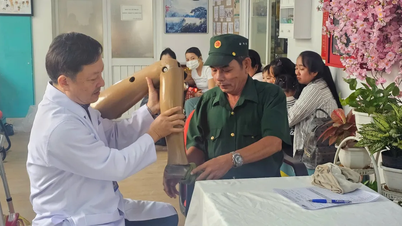


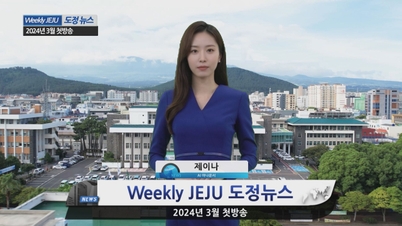

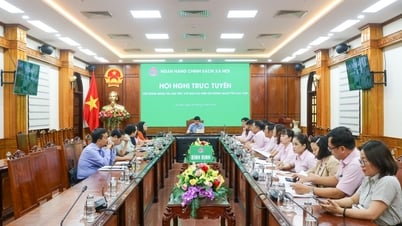







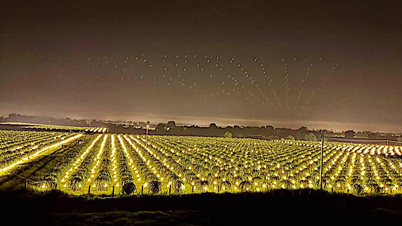

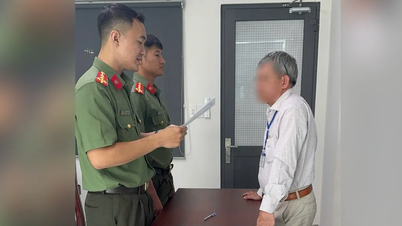
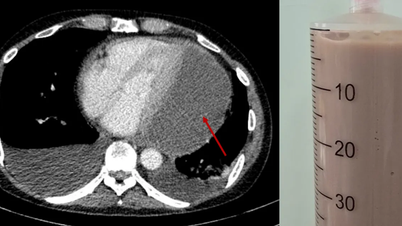
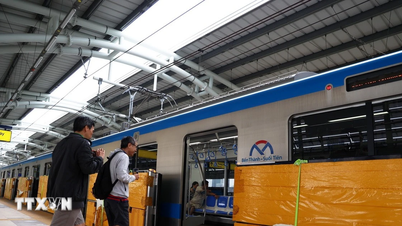

































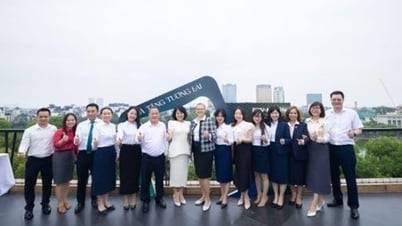













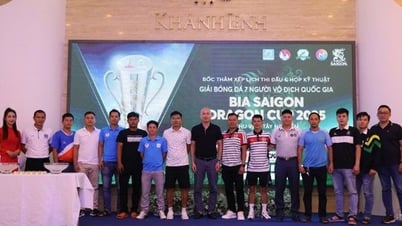


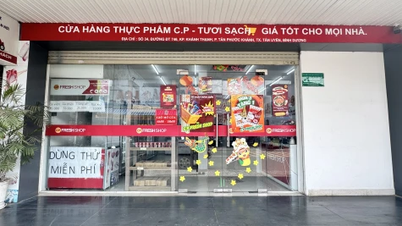
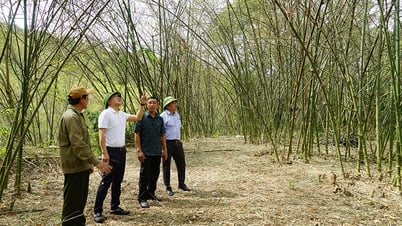












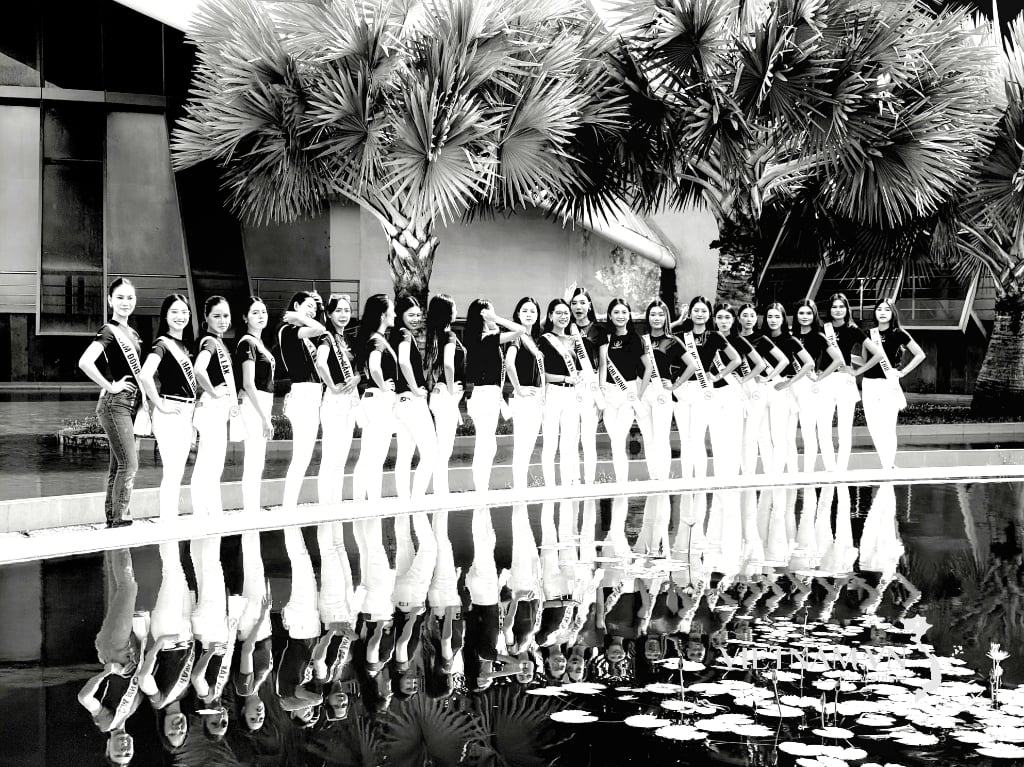
Comment (0)